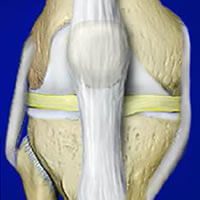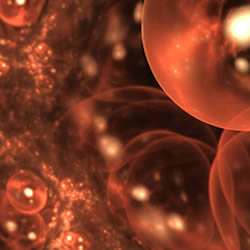Posterior Knee Pain Because of Popliteal Cyst
- Home
- Case Studies
- Posterior Knee Pain Because of Popliteal Cyst

Posterior Knee Pain Because of Popliteal Cyst
60 year old female with history of arthritis of left knee presents to the office with complaint of pain specially in the back of her knee, the posterior knee pain is localized to an area of 1 to two inches in diameter of swelling which feels like a water-filled balloon. The pain gets worse when the swelling is more and when she fully extend her knee or when she walks a lot. Her past medical history except for osteoarthritis of her knee otherwise is non-contributory. Advil definitely helps hers swelling as well as the pain. She does not smoke but she does drink socially. There is history of arthritis in the family. And she is a good candidate for total knee replacement.
Discussion: Popliteal cyst or Baker's cyst a fluid collection behind the knee.( A cyst is a closed pocket or pouch of tissue. It can be filled with air, fluid, pus, or other material.) Baker's cyst may be formed by the connection of a normal bursa (a bursa is a sac and a normal structure of lubricating fluid ) with the knee joint, these cysts are are typically made up from yellowish viscous synovial fluid and sometimes I have seen them as large as 2.5 inches in diameter. Baker's cysts in children is very common as well, where they appear as painless masses behind the knee that are more obvious when the knee is fully extended. A large cyst may cause some discomfort or stiffness but generally has no symptoms. Prevalence in adults is usually between 55 and 70, and in children between 4 and 7 years old. As many as one in five people with knee problems develop a Baker's cyst. Baker's cysts usually disappear spontaneously, but sometimes they hang around. In adults, this condition is frequently associated with arthritis of the knee. Infection, cartilage tear and injuries could be other causes of Baker's cyst. If the cyst rupture in can cause severe pain and swelling and bruising in the back of the knee. During a physical exam, the clinician will look for a soft mass in the back of the knee. If the cyst is small, comparing the affected knee to the normal knee can be helpful. There may be limitation in range of motion caused by pain or by the size of the cyst. Sometimes he may shine a light though the cyst (transilumination) to determine the mass filled with fluid. If the mass demonstrates any abnormal signs, like rapid growth, night pain, severe pain, or fever, a more involved work-up is indicated to rule out non-cystic tumors that can grow in the back of the knee. X-rays will not show the cyst since X-Rays are not really useful for observation of soft tissue . Ultrasound however can be helpful to visualize the cyst, ( Please note the patient's digital ultrasound). MRI and CT also could be used. Most of the times no treatment is necessary and the doctor can just observe the cyst over time. When it becomes too symptomatic I Aspirate ( Aspiration means to draw in or out using suction ), or drain the cyst with a syringe.
Case Study Date: 5/7/2005


















